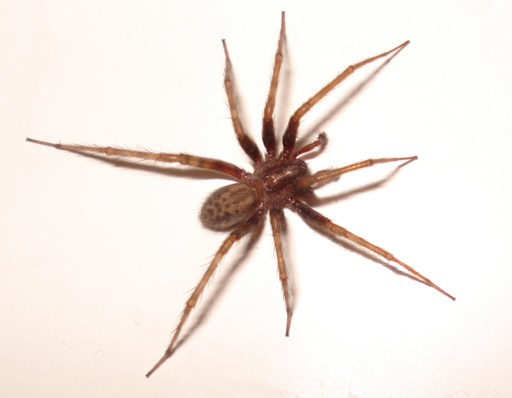Spiders
How To Identify Spiders
Spiders are non-insect arthropods with two body regions (unlike insects that have three) – the cephalothorax (head and thorax infused) and abdomen. They have 8 legs, a pair of jaws, a pair of pedipalps, and 8 eyes (some have 6). There are more than 3,500 species of spiders in the United States, the most common being the black widow spider, the brown recluse spider, and the common house spider. Spiders vary in color from light to dark brown, yellowish-brown, gray and black (the common ones). Spiders spend most of their time on building webs.
Spiders Eating And Feeding Habits
All species of spiders have spinnerets, which produce silk. They build webs and rest in them and wait for their prey. Spiders live in cellars, piles of wood, trash, crawl spaces, damp parts of buildings, etc. Spiders eat other pests and bugs like roaches, crickets, etc. Sometimes, they even eat other spiders. Spiders molt several times before reaching adulthood. Many spiders hibernate in winter as juveniles, adults or even in the egg stage. All spiders are predators. Their food source is usually alive; spiders inject venom inside their prey and trap it in their cobweb.
Threats
The bite of some spiders can be poisonous to humans. Some spider bites can cause cramping, weakness, sweating, headache, difficulty in breathing, etc. Spider bites can also leave strong marks on the area bitten, which do not vanish easily.
Types Of Spiders Found In Charlotte, NC

Black Widow or Latrodectus Hesperus
Brown Recluse or Loxosceles Reclusa
Photo: Lisa Zins
Writing Spider or Argiope Aurantia
Photo: Mark Lee
How To Prevent Spiders In Home
If you find any sign of spiders in your yard, home or office, immediately contact Crown Pest for the best spider elimination treatment. Our specialists are adept at recognizing species involved, the severity of the problem, and any potential threats. We will visit your premises and take the time to inspect the critical areas and typical habitats. Accordingly, they use the most advanced and the most-effective treatment to make your home, office, and surroundings pest-free.
Some DIY Tips To Get Rid Of Spiders:
-
- Wear gloves when moving things stored for a long time.
- Shake out your clothes and shoes before wearing them on.
- Stay away from spider webs.
- Prune branches of trees and plants from building surfaces.
- Place sticky traps in areas where spiders are most suspected.
- Remove spiders and spider webs with a vacuum cleaner.
- Rely on pest management services by Crown Pest Control to help eliminate spider activity in your home, office, and surroundings.
What Does A Spider Bite Look Like?
Usually, they are very similar to most insect bites. A red bump will appear on the skin that could get itchy and swell. Most people only experience mild irritation. If you are bitten by a venomous spider, the reaction is more severe.
If you are bitten by a black widow, the first signs are similar to the ones mentioned above. However, within an hour of the bite, you will experience more pain. In addition to the pain, you might have stomach cramps and began to sweat. In serious cases, you could have trouble breathing. The area around the bite most likely will continue to get red and more swollen.
Brown Recluse spiders are also considered venomous. Their bite tends to get worse over the first eight hours. The bit may have a small white blister that has a red ring around it. Some say it appears to look like a bullseye. In some cases, the bite can turn blue or purple and you may get an open sore that gets larger for up to ten days.
Remember that you can rely on pest management services by Crown Pest Control to help eliminate spider activity in your home, office, and surroundings.
Services Areas
Crown Pest Control is a reputable pest control company and we provide pest treatment services in Greater Charlotte Metropolitan Area, NC, i.e. Matthews, Mount Holly, Indian Trail, Monroe, Waxhaw, Concord, Harrisburg, Huntersville, Fort Mill (SC), Indian Land (SC), Tega Cay (SC), Pineville, Mineral Springs, Mint Hill, Stallings, Dilworth, Ballantyne, Cornelius, Davidson in North Carolina.

